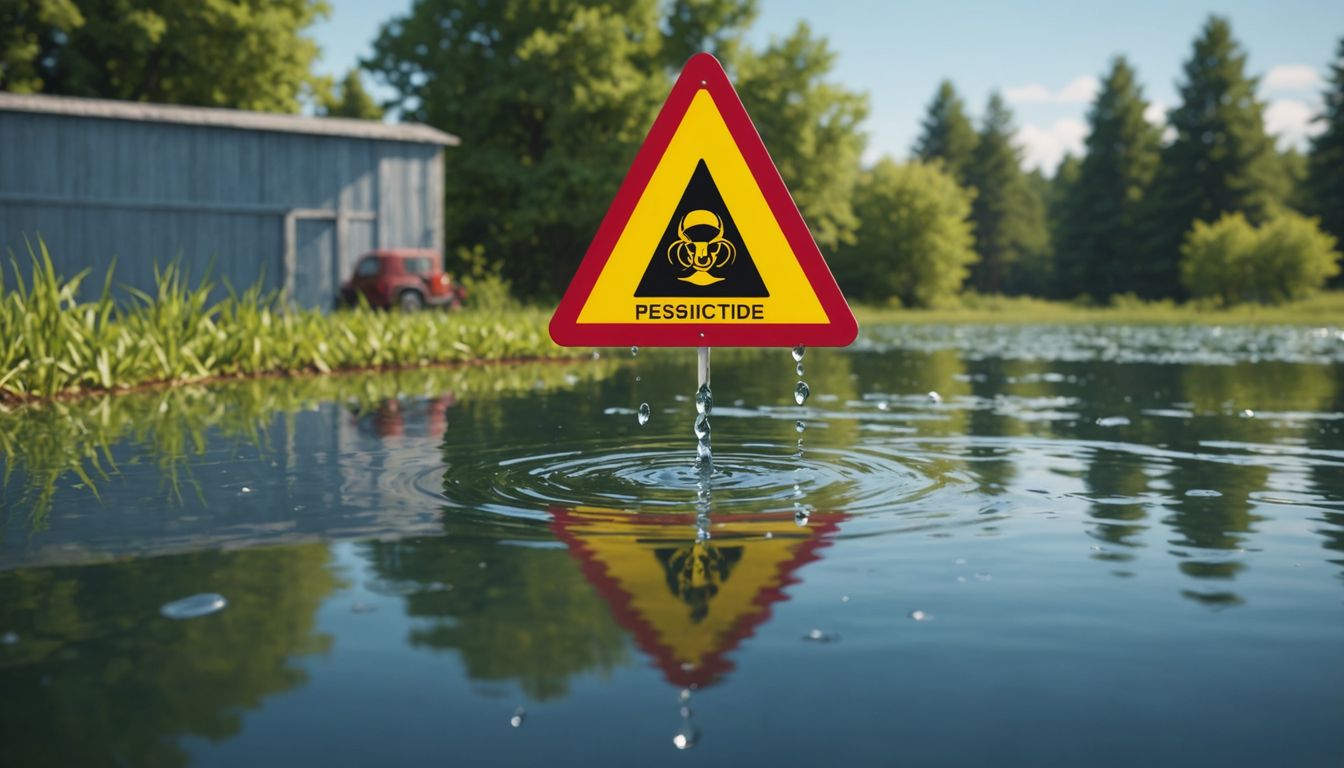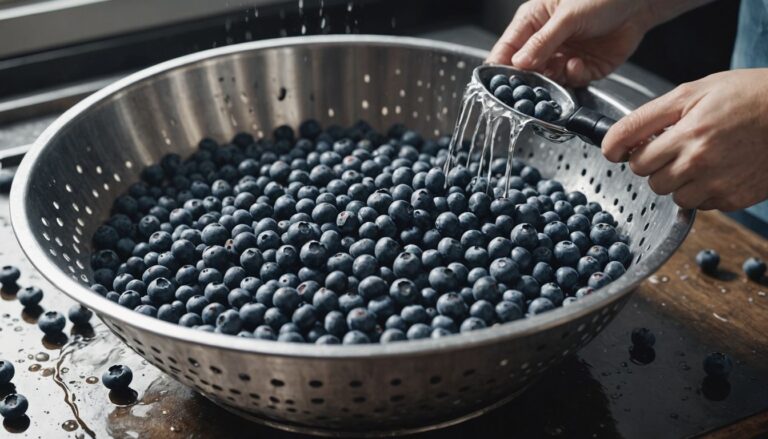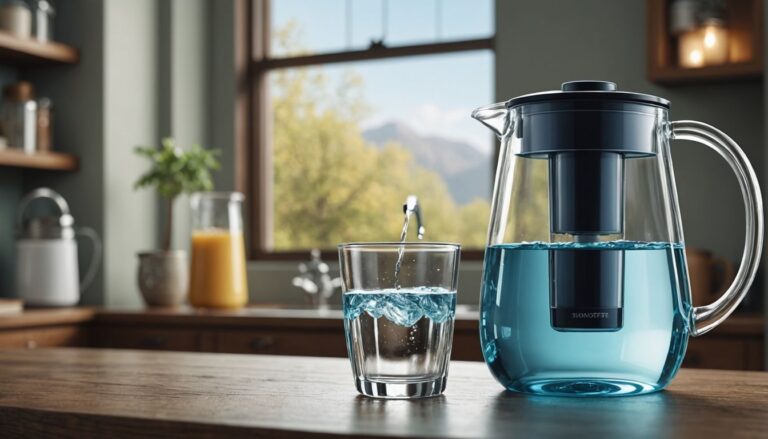How to Get Rid of Pesticides in Water: Effective Solutions

Pesticides in water are a growing concern for many people. While water treatment plants can remove some pesticides, they often leave behind dangerous residues. The good news is that there are effective ways to get rid of these harmful chemicals from your water. In this article, we will explore various methods and solutions to ensure your water is safe and clean.
Key Takeaways
- Water treatment plants can remove some pesticides, but not all, leaving behind dangerous residues.
- High-quality water filters, like activated carbon or reverse osmosis systems, can remove over 90% of pesticides from water.
- DIY solutions, such as using activated carbon at home, can also help reduce pesticide levels in your water.
- Advanced techniques, including advanced oxidation processes and membrane bioreactors, offer effective ways to remove pesticides.
- Regular testing and monitoring of water quality are essential to ensure that your water is free from harmful pesticides.
Understanding Pesticides in Water
Sources of Pesticide Contamination
Pesticides can sneak into water from many places. They are often used in farming, parks, and even in your own backyard. When it rains, these chemicals can wash into rivers, lakes, and even seep into the ground, reaching our drinking water. This means that pesticides can be almost everywhere in our water sources.
Common Pesticides Found in Water
There are many types of pesticides that can end up in water. Some of the most common ones include:
- Insecticides: Used to kill insects.
- Herbicides: Used to kill weeds.
- Fungicides: Used to prevent mold and mildew.
Each of these can have different effects on water quality and health.
Health Risks Associated with Pesticides
Pesticides in water can be harmful to your health. They are designed to kill pests, but they can also hurt humans and animals. Drinking water with pesticides can lead to health problems like nausea, dizziness, and even long-term issues like cancer.
It’s important to know what’s in your water to keep yourself and your family safe.

How A New Piece Of Technology Provides The Drug Free Pain Relief You’ve Been Looking For
If you’re anything like me, you don’t want to use drugs or pills that you’re unsure about.
Effective Water Filtration Methods
Activated Carbon Filters
Activated carbon filters are a popular choice for removing pesticides from water. These filters work by trapping contaminants in the tiny pores of the carbon. They are effective at removing a wide range of pesticides, herbicides, and other organic chemicals. Plus, they can improve the taste and odor of your water.
Reverse Osmosis Systems
Reverse osmosis (RO) systems are another excellent option. These systems use a semi-permeable membrane to remove contaminants from water. RO systems can eliminate up to 99% of pesticides, making them one of the most effective filtration methods available. They also remove other impurities like heavy metals and salts.
Distillation Processes
Distillation involves boiling water and then condensing the steam back into liquid form. This process effectively removes pesticides and other contaminants because they do not vaporize with the water. Distillation can be a bit slow and energy-intensive, but it provides very pure water.
When choosing a water filtration method, consider your specific needs and the types of contaminants present in your water. Each method has its pros and cons, so it’s essential to pick the one that best suits your situation.
DIY Solutions for Reducing Pesticides
Using Activated Carbon at Home
Activated carbon is a fantastic way to reduce pesticides in your water. You can easily find activated carbon filters at most home improvement stores. These filters work by trapping contaminants in the tiny pores of the carbon. Just install the filter in your water system, and you’re good to go!
Homemade Filtration Systems
Creating your own water filtration system can be both fun and effective. You can use materials like sand, gravel, and activated carbon to build a multi-layer filter. Here’s a simple way to do it:
- Get a large container and make a small hole at the bottom.
- Layer the bottom with gravel.
- Add a layer of sand on top of the gravel.
- Place activated carbon on top of the sand.
- Pour water through the filter and collect it from the bottom.
Natural Adsorption Techniques
Natural materials like clay and zeolite can also help in reducing pesticides. These materials have properties that allow them to attract and hold onto contaminants. Simply mix these materials with water and let them sit for a while before filtering the water.
Using natural methods to filter water not only helps in reducing pesticides but also makes you feel good about using eco-friendly solutions.
Choosing the Right Water Filter
Factors to Consider
Picking the right water filter can feel like a big task, but it doesn’t have to be. Think about what you need to remove from your water. Is it pesticides, heavy metals, or just bad taste? Different filters tackle different problems. Also, consider the size of the filter and how much water you use daily. Some filters are great for a single faucet, while others can handle the whole house.
Top Recommended Filters
Here are some top picks to help you out:
- HomeWater UPSTREAM™ 4-Stage Whole Home Water Filter: This one uses catalytic carbon to get rid of pesticides, herbicides, and other nasty stuff.
- EcoPro Faucet Filter: Perfect for your kitchen sink, it’s easy to install and effective.
- PitcherPro Filter Pitcher: Great for small households, just fill it up and keep it in the fridge.
Maintenance Tips
Keeping your filter in good shape is key. Make sure to change the filter cartridges as recommended, usually every 3 to 6 months. Regular maintenance ensures your water stays clean and safe. Also, clean the filter housing to prevent any buildup of dirt or mold. A little upkeep goes a long way in making sure your filter works its best.
Remember, the best filter is one that fits your needs and lifestyle. Take your time to choose wisely and enjoy clean, safe water every day.

How A New Piece Of Technology Provides The Drug Free Pain Relief You’ve Been Looking For
If you’re anything like me, you don’t want to use drugs or pills that you’re unsure about.
Advanced Techniques for Pesticide Removal
Advanced Oxidation Processes
Advanced Oxidation Processes (AOPs) are super effective for getting rid of pesticides in water. These methods use powerful chemicals like ozone or hydrogen peroxide to break down harmful substances. AOPs can remove even the toughest pesticides that other methods might miss. It’s like using a superhero to clean your water!
Membrane Bioreactors
Membrane Bioreactors (MBRs) combine biological treatment with membrane filtration. This combo is great for removing pesticides and other pollutants. The biological part breaks down the pesticides, while the membrane filters out any remaining particles. It’s a double whammy that ensures your water is super clean.
Activated Sludge Systems
Activated Sludge Systems use microorganisms to eat up pesticides and other organic matter in the water. These systems are often used in large-scale water treatment plants. The microorganisms break down the pesticides, making the water safer to drink. It’s like having tiny helpers cleaning your water for you.
Using advanced techniques like AOPs, MBRs, and Activated Sludge Systems can make a huge difference in the quality of your water. These methods are powerful and effective, ensuring that your water is as clean as possible.
Verifying Water Quality
Testing for Pesticides
To make sure your water is safe, you need to test it for pesticides. Home testing kits are available and can give you a quick idea of what’s in your water. However, for more accurate results, you might want to send a sample to a certified lab. Labs can detect even tiny amounts of pesticides that home kits might miss.
Understanding Lab Certifications
When choosing a lab, look for certifications like ISO or EPA. These certifications mean the lab meets high standards for accuracy and reliability. You can usually find this information on the lab’s website or by asking them directly.
Regular Monitoring Practices
It’s not enough to test your water just once. Pesticide levels can change over time, so regular monitoring is key. Set a schedule to test your water every few months. This way, you can catch any changes early and take action if needed.
Regular testing helps you stay ahead of any potential problems, ensuring your water remains safe to drink.

How A New Piece Of Technology Provides The Drug Free Pain Relief You’ve Been Looking For
If you’re anything like me, you don’t want to use drugs or pills that you’re unsure about.
Conclusion
Getting rid of pesticides in water is crucial for our health and well-being. While water treatment plants do their part, using additional methods like activated carbon filters or reverse osmosis can make a big difference.
These solutions can remove over 90% of pesticides, making your water much safer to drink. Remember, it’s not just about the water you drink but also the water you use to wash your fruits and vegetables. Simple steps like soaking produce in salt water or using baking soda can help reduce pesticide residues.
By taking these actions, you can ensure that the water you and your family consume is as clean and safe as possible.
Frequently Asked Questions
How can I remove pesticides from my water?
To remove pesticides from water, using a combination of chlorine treatment and a high-quality water filtration system with activated carbon, catalytic carbon, or reverse osmosis is most effective. This can eliminate over 90% of pesticides.
What health problems can pesticides cause?
Pesticides in water can lead to various health issues, including hormonal disruptions, reproductive problems, and even cancer. Long-term exposure can be particularly harmful.
What is the best water filter for removing pesticides?
Activated carbon filters are generally the most effective at removing pesticides from tap water. They work through a process called adsorption, which traps contaminants in the filter.
Are there DIY methods to reduce pesticides in water?
Yes, you can use activated carbon at home, create homemade filtration systems, or use natural adsorption techniques to reduce pesticide levels in your water.
How often should I test my water for pesticides?
It’s recommended to test your water for pesticides at least once a year. If you live in an area with high pesticide use, more frequent testing might be necessary.
What are the risks of not removing pesticides from water?
Not removing pesticides from water can lead to serious health risks, including hormonal imbalances, reproductive issues, and increased cancer risk. It’s crucial to ensure your water is clean and safe.






